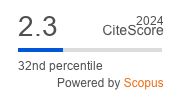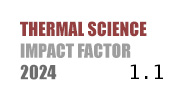ABSTRACT
The recent European energy policies progressively introduced more restrictive energy performance requirements aimed at achieving the nearly zero-energy building target for all new buildings and major renovations. To check compliance with these requirements, the building energy performance can be evaluated through different calculation methods, as widely presented in literature. The present article is aimed at identifying in which boundary conditions (e. g. climate, use category, building size, thermal insulation level) a simplified steady-state calculation method can predict with sufficient accuracy the energy performance of low-energy buildings if compared with a dynamic simulation model. The analysis was performed on two building types, representative of the Italian residential typology, located in three different climatic zones and characterised by two insulation levels. The insulation levels fit the U-values of the notional reference building, established by the Italian legislation for checking compliance with energy performance requirements in two different steps; the first level is in force until 2020, while the second level is that of a reference nearly zero-energy building in force from 2021 onwards. The building energy performance, in terms of net energy needs for space heating and space cooling, was assessed by means of both the monthly calculation method of CEN standards and the detailed simulation model of EnergyPlus. Consistency options were applied to the models to guarantee that their outputs could be comparable. The quasi-steady-state method demonstrated to predict the cooling energy need quite well, but to lose in accuracy when the weight of the thermal transfer in the energy balance increases.
KEYWORDS
PAPER SUBMITTED: 2017-07-24
PAPER REVISED: 2017-12-08
PAPER ACCEPTED: 2017-10-27
PUBLISHED ONLINE: 2018-04-28
THERMAL SCIENCE YEAR
2018, VOLUME
22, ISSUE
Supplement 4, PAGES [S1117 - S1127]
- Borgstein, E. H., et al., Evaluating energy performance in non-domestic buildings: A review, Energy and Buildings, 128 (2016), pp. 734-755
- European Committee for Standardisation, EN ISO 13790, Energy performance of buildings - Calculation of energy use for space heating and cooling, 2008
- van Dijk, H., et al., A monthly method for calculating energy performance in the context of European building regulations, Proceedings, 9th International IBPSA Conference, Building Simulation, Montréal, Canada, 2005, pp. 255-262
- European Parliament, Directive 2010/31/EU of the European Parliament and of the Council of 19 May 2010 on the energy performance of buildings (recast), Official Journal of the European Union, 18 June 2010
- European Commission, M/480 EN, Mandate to CEN, CENELEC and ETSI for the elaboration and adoption of standards for a methodology calculating the integrated energy performance of buildings and promoting the energy efficiency of buildings, in accordance with the terms set in the recast of the Directive on the Energy Performance of Buildings (2010/31/EU), 14 December 2010
- Horvat, I., Dović, D., Dynamic modeling approach for determining buildings technical system energy performance, Energy Conversion and Management, 125 (2016), pp. 154-165
- Jokisalo, J., Kurnitski, J., Performance of EN ISO 13790 utilisation factor heat demand calculation method in a cold climate, Energy and Buildings, 39 (2007), pp. 236-247
- Wauman, B., et al., Evaluation of the accuracy of the implementation of dynamic effects in the quasi steady-state calculation method for school buildings, Energy and Buildings, 65 (2013), pp. 173-184
- Kim, Y., et al., Stochastic comparison between simplified energy calculation and dynamic simulation, Energy and Buildings, 64 (2013), pp. 332-342
- Corrado, V., Fabrizio, E., Assessment of building cooling energy need through a quasi-steady state model: Simplified correlation for gain-loss mismatch, Energy and Buildings, 39 (2007), pp. 569-579
- Evangelisti, L., et. al., Experimental investigation of the influence of convective and radiative heat transfers on thermal transmittance measurements, International Communications in Heat and Mass Transfer, 78 (2016), pp. 214-223
- Gasparella, A., Pernigotto, G., Comparison Of Quasi-Steady State And Dynamic Simulation Approaches For The Calculation Of Building Energy Needs: Thermal Losses, Proceedings, International High Performance Buildings Conference, Purdue, In., USA, 2012, paper 88
- Asdrubali, F., et al., A quantitative methodology to evaluate thermal bridges in buildings, Applied Energy, 97 (2012), pp. 365-373
- Ballarini, I., et al., A validation of the quasi-steady state building energy model by a dynamic numerical analysis, Proceedings, 10th REHVA World Congress "Sustainable Energy Use in Buildings" Clima 2010, Antalya, Turkey, 2010
- Corrado, V., et al., Verification of the new Ministerial Decree about minimum requirements for the energy performance of buildings, Energy Procedia, 101 (2016), pp. 200-207
- Beccali, M., et al., Simplified models for building cooling energy requirement, Proceedings, 7th International IBPSA Conference, Building Simulation, Rio de Janeiro, Brazil, 2001, pp. 295-302
- Kokogiannakis, G., et al., Comparison of the simplified methods of the ISO 13790 standard and detailed modelling programs in a regulatory context, Journal of Building Performance Simulation, 1 (2008), 4, pp. 209-219
- International Organisation for Standardisation, ISO 52000-1, Energy performance of buildings - Overarching EPB assessment - Part 1: General framework and procedures, 2017
- Italian Ministry of Economic Development. Ministerial Decree 26/06/2015, Applicazione delle metodologie di calcolo delle prestazioni energetiche e definizione delle prescrizioni e dei requisiti minimi degli edifici
- ***, EnergyPlus, energyplus.net/
- Corrado, V., et al., Fascicolo sulla Tipologia Edilizia Italiana
- Italian Thermotechnical Committee (CTI), Test reference years for thermotechnical applications, try.cti2000.it/
- Italian National Organisation for Standardisation (UNI), UNI/TS 11300-1, Prestazioni energetiche degli edifici - Parte 1: Determinazione del fabbisogno di energia termica dell'edificio per la climatizzazione estiva ed invernale
- European Committee for Standardisation, EN ISO 13789, Thermal performance of buildings - Transmission and ventilation heat transfer coefficients - Calculation method, 2017
- European Committee for Standardisation, EN ISO 13786, Thermal performance of building components - Dynamic thermal characteristics - Calculation methods, 2017

